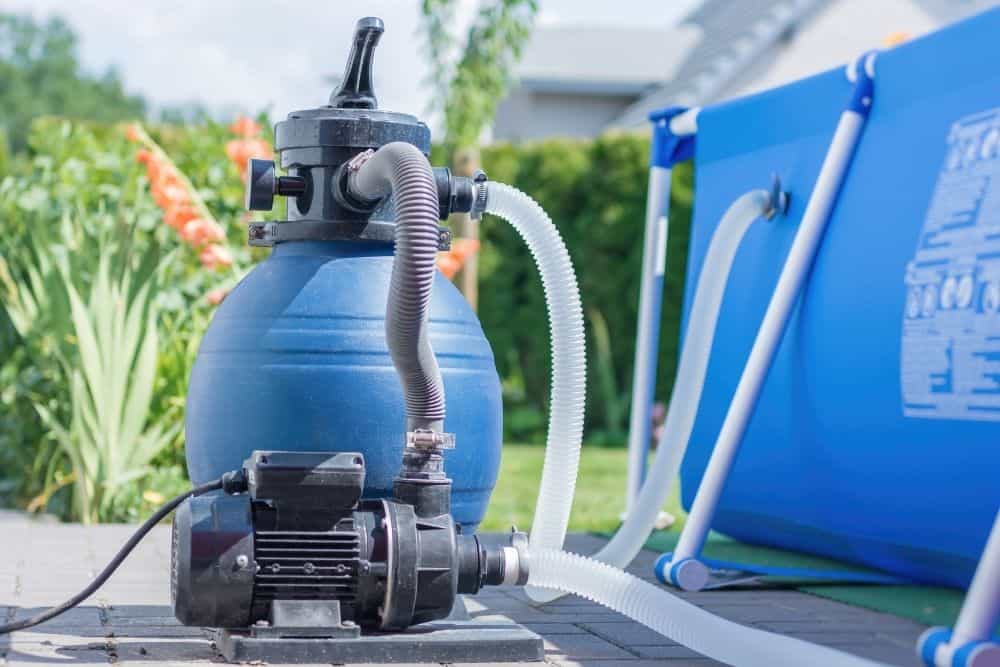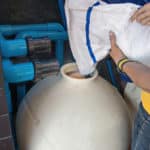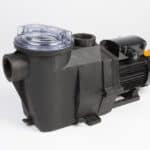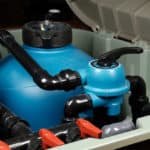Sand filters are one of the most popular ways to keep a pool clean. Not only are sand filters easy to install, but they’re also the most economical and ecologically friendly way to clean a pool. There’s nothing complicated about a sand filter - you simply change the sand when necessary!
Thing is, how does a pool sand filter work? It almost seems counterintuitive that sand can be used to clean a pool in comparison to harsh chemicals and cleaning agents.

If you’re new to the world of pools and you’re looking into sand filters, you’re probably wondering how on earth these filters work without pushing annoying grains of sand into your pool. Luckily for you, we’ve got you covered. Here is everything you need to know about pool sand filters!
So, How Does A Pool Sand Filter Work?
To put it simply, the sand in a sand filter is used as a natural filtering agent that holds any dirt or debris lingering in the water, before filtering out the clean water, leaving your pool debris-free and crystal clear. Think of these filters like a sieve - when you drain pasta, the pasta is trapped in the sieve to allow the water to fall through the holes. The same rules apply for sand filters!
Sand filters contain a canister that is filled with sand, which the water is forced to filter through. Clean water is made of tiny particles that can fall through the sand with ease, but any larger particles will get stuck - such as leaves and dirt invisible to the human eye. Once the larger particles have been trapped by the sand, a pump works to then push the clean water back into the pool.
Chemicals are still needed with a sand pool filter
You will still need to add chlorine to the pool and maintain water balance.
The more the sand filter is used. the better it gets at trapping larger particles. When large particles are caught by the sand, they also work as a barrier to prevent similarly large particles from accidentally pushing through the sand. Instead, these larger particles allow for the cleaning water (the smallest particles) to be pushed back into the pool.
Now, sand filters don’t use regular sand from the beach to clean a pool. Sand filters require a specific type of sand and grain size to prevent any sand from being accidentally pushed through the filter into the pool. You should look to buy any sand labeled as “pool sand”, as these products will meet the requirements and standards.
Fortunately, sand filters require minimal maintenance that does not require any harsh chemicals, allowing for the most natural pool filter system. The main maintenance requirements are regular backwashing to get rid of any debris stuck in the sand, and replacing the sand itself.
What Gets Caught In A Sand Filter?
Anything made of larger particles than clean water will get caught in a sand filter! This includes gravel, insects, leaves, and the general dirt and debris that comes from humans who swim in the pool - such as fluff from clothes or pet hair (especially if you let your dog swim in the pool!).
In the first few uses of your sand filter, there might be some small particles of dirt that make their way through the filter. This is because these filters require multiple uses to be the most effective filter possible. Eventually, once the filter has gathered a nice amount of debris, even the smallest of particles will be trapped amongst the sand, allowing for the water to be cleaner and cleaner with every use.
Sand Filter Maintenance Requirements
While sand filters are more effective with every use, there will come a time when there is too much dirt and debris in the filter, causing a pressure buildup. It will need to be cleaned and replaced to allow for the filter to clean the water again.
The best way to tell when your sand filter needs to be cleaned is to check the pressure gauge every week. Make sure to keep a note of the reading to see how much pressure has been increased.
By the time the pressure gauge has increased by 8-10 pounds, the filter will have to be backwash cleaned. Backwash cleaning is when you allow the pump to stop cycling water through the filter, then, you connect the backwash hose to the filter, and set the pump valve to the “Backwash” setting.
The water will start running clear and eventually turn dirtier as the debris and dirt is pushed out of the sand. Run the water until it is clear again, and then set the pump valve to “Rinse” for 30-45 seconds. Once the filter is rinsed, you can detach the backwash hose and set the pump to its original setting.
You will also have to replace the sand at some point, because even frequent backwashing won’t clean the filter. Fortunately, the sand will only have to be changed once every 3-5 years.
To change the sand, you have to backwash the filter and don’t turn the pump back on. Release the pressure inside the sand canister by opening the pressure valve, and open the drain valve underneath the canister. This will allow the water inside the canister to fall out.
Then, you’ll have to loosen the bolts holding the canister together with care to loosen the bolts evenly, otherwise you run the risk of causing damage to one side due to stress.
Next, remove the top of the canister to remove the sand inside and check to see if any internal components are loose or broken inside the canister and replace if necessary. Fill the canister with new sand (leaving about an inch or two from the top), put the top of the canister back on, perform another backwash, and then turn on the pump!
How does a pool sand filter work summary
Cleaning and replacing the sand in a sand filter is undoubtedly the most time-consuming part of owning and maintaining a sand filter. However, considering this step only has to be done once every 3-5 years, it’s not exactly a hardship when it comes to keeping the water in your pool crystal clear and hygienic.









